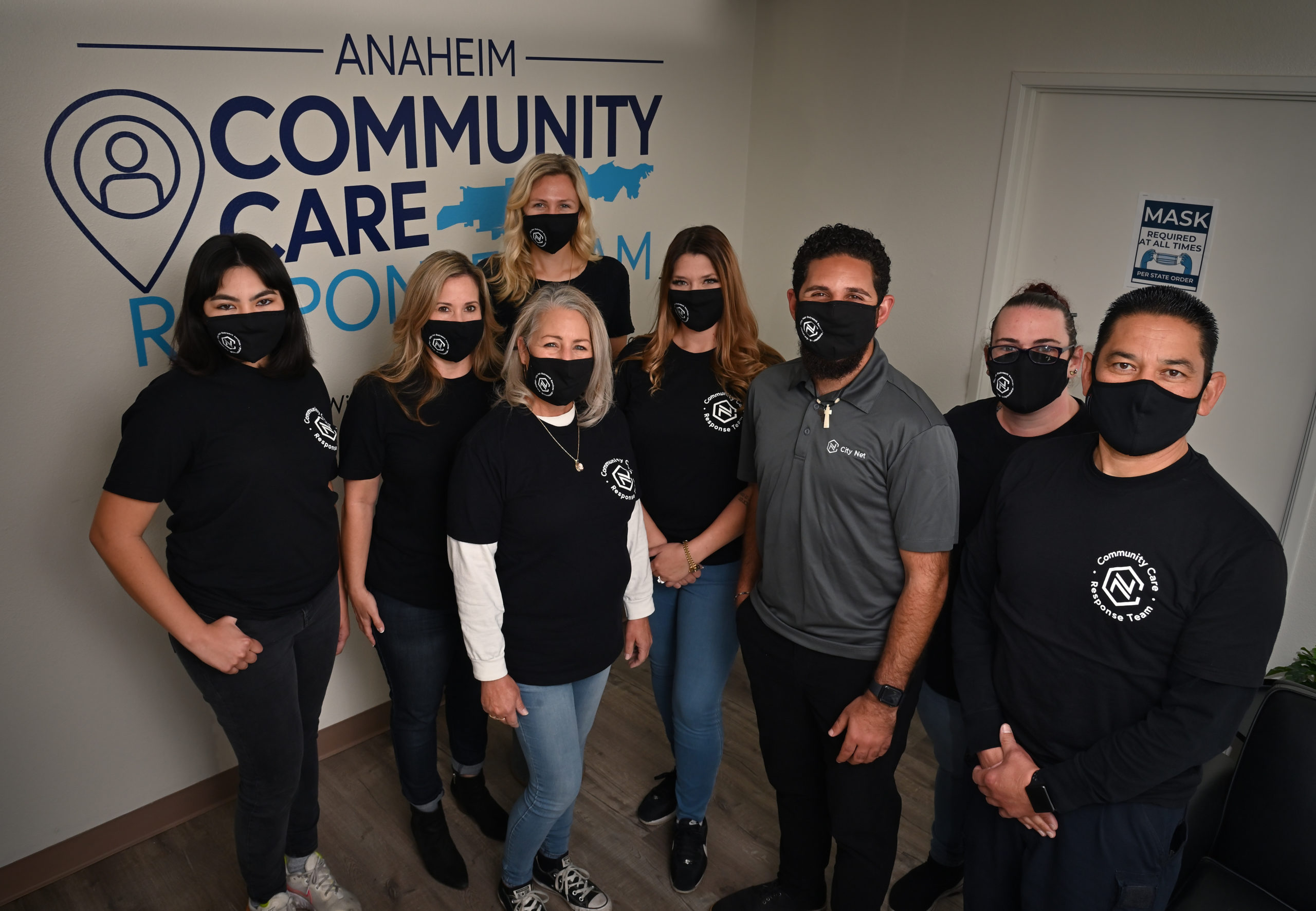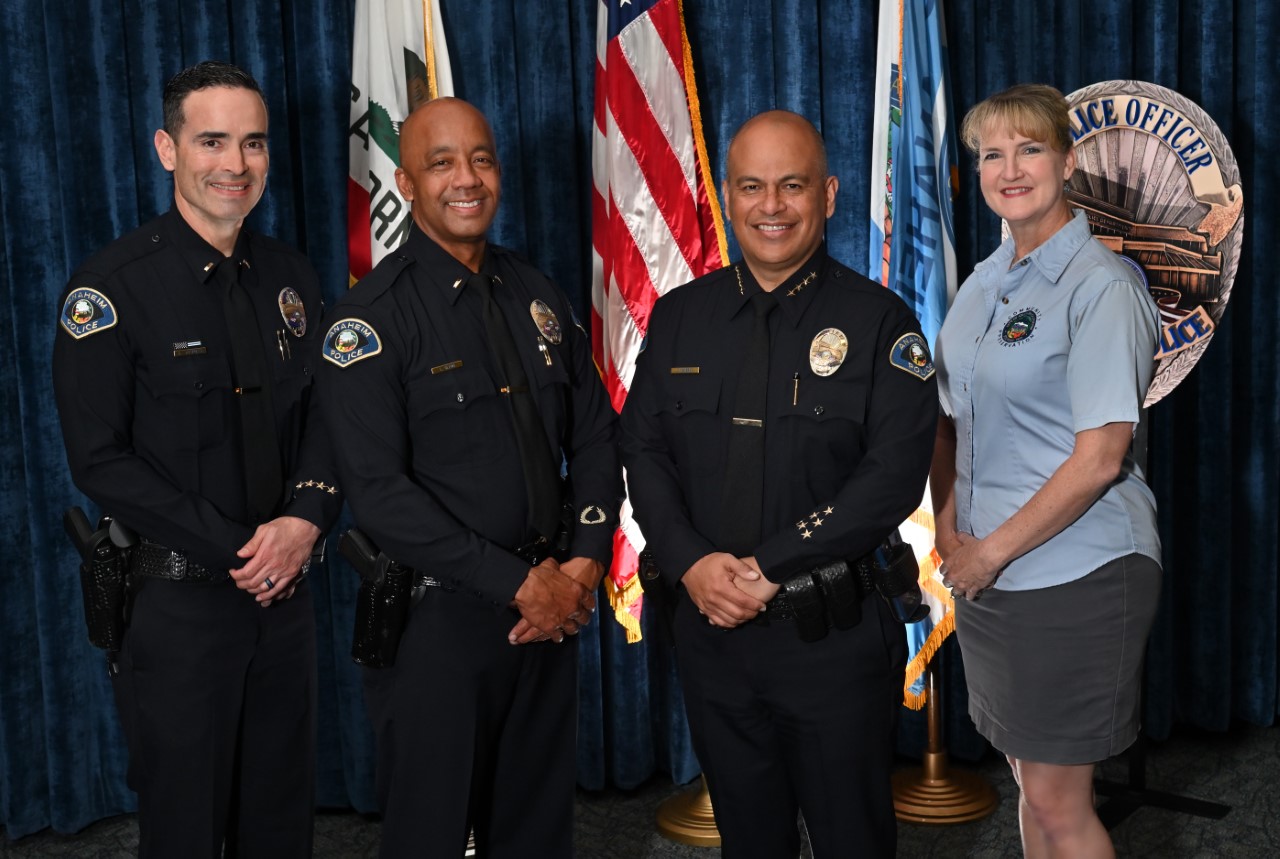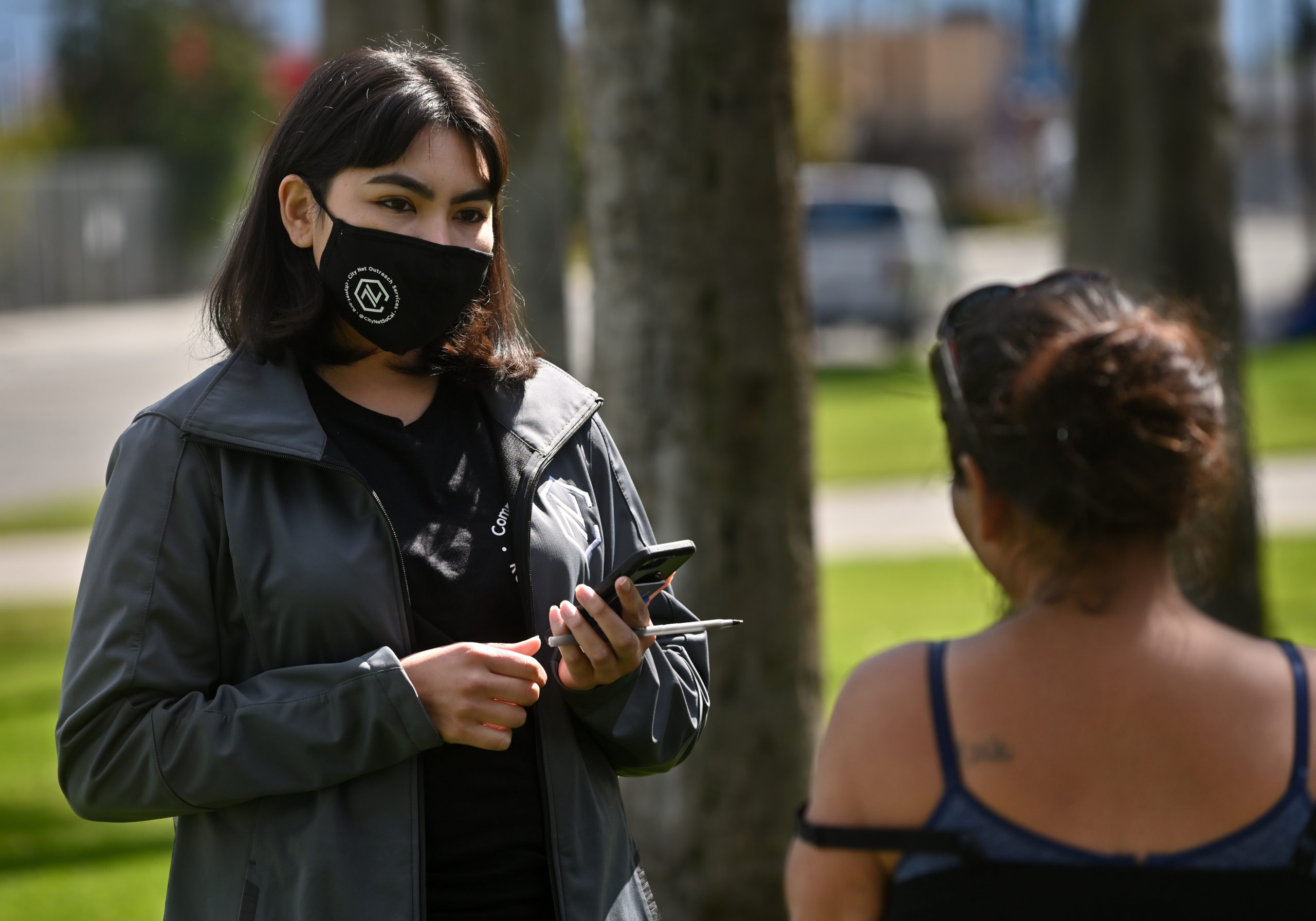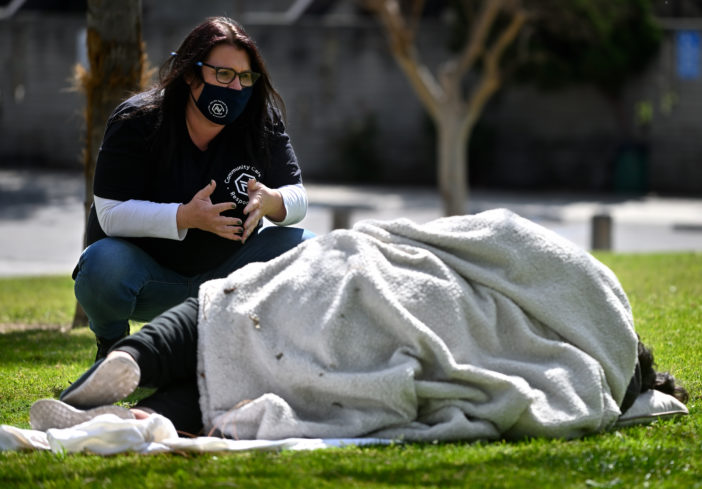In the summer of 2020, Anaheim Police Chief Jorge Cisneros sat in on a virtual City Council meeting and spoke about the protests happening in the community.
Most of them, he explained, were peaceful. Residents just wanted to express themselves, and they wanted to see change.
It had been a long couple of months. The world was weary from the pandemic and then civil unrest began as the death of George Floyd in Minneapolis caused a tantamount ripple effect, which brought a “defund the police” movement to every city in America — including Anaheim.
In that meeting, Cisneros began to talk about how Anaheim Police Department could make strides toward reform, and how the department could lead the effort by revolutionizing the City’s approach to policing and serving the homeless community. The department fields about 20,000 calls a year related to homelessness, representing about 13 percent of all service requests.
“We really had to look at reform and start doing something that would make an impact,” Cisneros said. “On that day in front of City Council, I talked about three things – training, accreditation and how we (as a police department) needed to stop responding to calls without criminal nexus or concern – which for our City was calls of service about our homeless.”
What resulted was an approach unlike anything the police department or City had tried before – the creation of a Community Care Response Team (CCRT).
In just three months, the team has responded to and provided services following more than 3,500 calls — situations police officers in the past would’ve been tasked with, such as somebody sleeping on a bus bench or asking for money outside a grocery store.
Cisneros and others believe the approach could be a model for cities and police agencies across the state and nation.

Members of City Net’s Community Care Response Team in Anaheim include, from left, Jessica Candelearia, Jessica Bruce, Machelle Jordan, Chelsea Bowers, back, Lauren Justice, Andrew Boutros, Christina Nelson and Robert Benavides.
Photo by Steven Georges/Behind the Badge
Help from experts: Introducing Anaheim’s CCRT
The CCRT opened its dispatch office on January 1 in a business park on Crescent Avenue in Anaheim. The parking lot is lined with logo-covered vans and the office is bright.
There’s a small conference room, a dry erase board with a handwritten staffing schedule, cubicles for each dispatcher and hand sanitizer available as people come in for their shift.
The office itself is the first of its kind, a unique set up run much like an emergency service center for a police or fire department, but here calls are targeted to Anaheim’s homeless.
For Chelsea Bowers, communications director for City Net, the opportunity Anaheim has provided is a dream come true.
“The national conversation is saying we need to change the model and explore how we approach homelessness … this 6-month pilot program is going to allow us to be creative and test the waters,” Bowers said. “I think it is really impressive on the City’s part to see a need and take a different approach to solve it. Right now, Anaheim is the only city doing this. They are leading the charge.”
According to Bowers, in January the team fielded 800 calls that were redirected from the police department and sent to the CCRT. In February, the calls jumped to 1,000 as more community members began to learn about the program and in March the numbers escalated to more than 1,700 calls.
The CCRT dispatch office is open from 7 a.m. to 9 p.m. seven days a week with dispatchers working from home or the office. The CCRT is staffed with case workers, health clinicians, social workers and security officers who work in tandem with those who head out to the field.
Outreach workers help homeless people connect with mental health services, assistance with shelter access, medical needs, social service programs or even a bus ticket back home where they have family waiting for them.
Jessica Bruce, Chief Program Officer at City Net So Cal explained community members can connect with a CCRT dispatcher in a few different ways:
- Directly calling Anaheim Emergency Services (911) and reporting homelessness or someone experiencing a mental health crisis. The emergency dispatchers than decide if the call goes to police officers or to CCRT dispatchers.
- Calling the CCRT hotline number and speaking directly to a dispatcher.
- And third is heading to the Anytime Anaheim site or downloading the app where residents are able to share photos, addresses and other details to connect a case worker to a client.
“We know that 99.9 percent of calls that police officers get about homeless is not an emergency, and this new service takes out the middleman. It diverts non-violent, non-emergency calls to us” Bruce said. “City Net has always had an outreach line, but nothing like this … now we have live dispatch, and this is a game changer.”

Lt. Jonathan Yepes, Lt. Lorenzo Glenn, Chief Jorge Cisneros and Community Preservation Manager Sandra Lozeau
The homeless and law enforcement
When it came to answering service calls for the homeless, Anaheim Lt. Lorenzo Glenn soon realized this was not what he and his fellow officers had trained for at the police academy.
“If you would have told me 30 years ago we would be responding to the amount of mental health and homeless issues we have today, I would have said no way,” said Glenn, Anaheim Police Department’s Homeless Liaison.
“Homelessness has become our no. 1 problem right now, and we’ve been answering calls for years and learning as we go, but we have always known we had to do something different. We are not going to arrest our way out of this issue. We can’t.”
The department has employed a homeless liaison team since 2014.
After Cisneros was given the green light to work on a new approach to the City’s homeless challenges, he, Glenn and Sandra Lozeau, the City’s Community Preservation and Licensing Manager/Homeless Liaison, began to research how other cities were approaching homelessness and finding success.
Pulling from cities with inspirational programs from New York, Denver, and Eugene, Oregon’s established CAHOOTS (Crisis Assistance Helping Out on The Streets) program, the Anaheim Police Department created the CCRT.
The pilot program has given the City of Anaheim the right tools and the right people to help navigate the complex challenges that arise with the homeless population.
“We see CCRT as a reimagining of how we approach the homeless, because we are trying to change the culture of how it is handled,” Lozeau said. “The normal reaction for people is to call the police when it comes to the homeless, but what they are doing, a lot of times … is not illegal. We are government employees, and we don’t have the skill set to handle this, and we don’t always know the right people to call. Now, we will let the CCRT take the lead.”
Cisneros has been in law enforcement for 30 years. Throughout that time, his officers have been the primary first responders to the homeless. They would answer calls, go out in their black and whites and flash their lights to move people along.
But over the years, things began to change.
“In the ’90s there were homeless, at times. It was usually something you dealt with a few times a week,” he said. “Now as the chief, I can see there’s a lot more connection to the homeless in our calls to service. One out of every five calls have a homeless nexus these days. That’s pretty significant.”

Jessica Candalaria of City Net’s Community Care Response Team in Anaheim talks to a homeless woman in La Palma Park in Anaheim about programs available to her to help get her off the street.
Photo by Steven Georges/Behind the Badge
A global pandemic brings change and funding
Before the pandemic started, Anaheim officers were responding to calls about people sleeping on bus benches, asking for money in front of a neighborhood supermarket or someone walking across the street on a busy intersection.
Officers would respond, but there was little they could do.
Cisneros knew they needed a new way to handle things, but they also needed funding.
What he never expected was that it would take the arrival of a global pandemic to bring the homeless issue to the forefront.
The COVID-19 pandemic resulted in the world sheltering in place, all except for the homeless who didn’t have a lot of options.
The discrepancy demanded change, and change arrived when the City received $2.5 million from the Coronavirus Aid, Relief, and Economic Security (CARES) Act. This funding was used to create the CCRT.
“It was the perfect storm,” Lozeau said. “Despite this horrible pandemic, there has been a lot of good that has come from it. We’ve had a lot of funding that has come from the state and county to help us with our homeless population.”
As the pilot program continues to make strides, Cisneros watches as non-violent service calls that police would have handled are funneled instead to the CCRT; to staff who know how and where to get help for this vulnerable community.
He is hopeful this is the first step to continue reform for the Department and the City.
“Every program has strength and challenges, so I’m waiting to see how things progress before I turn on the faucet all the way. I want the CCRT to get their legs,” Cisneros said. “It was not our goal to be in the business of working with the homeless, but here we are, and we want to do something and really make an impact. Sometimes that requires a willingness to step out of the box.”
Click here for more information on the CCRT.
 Behind the Badge
Behind the Badge



